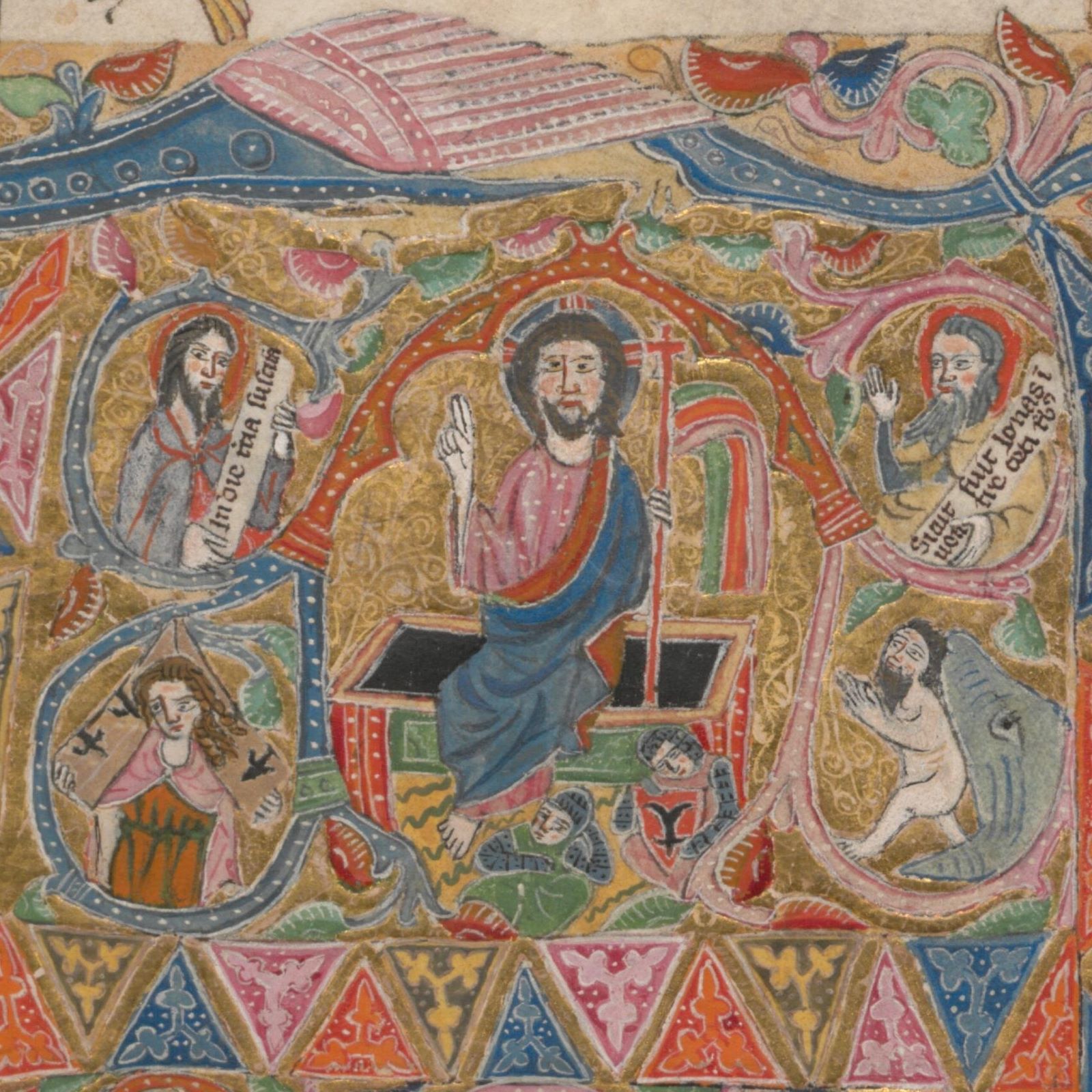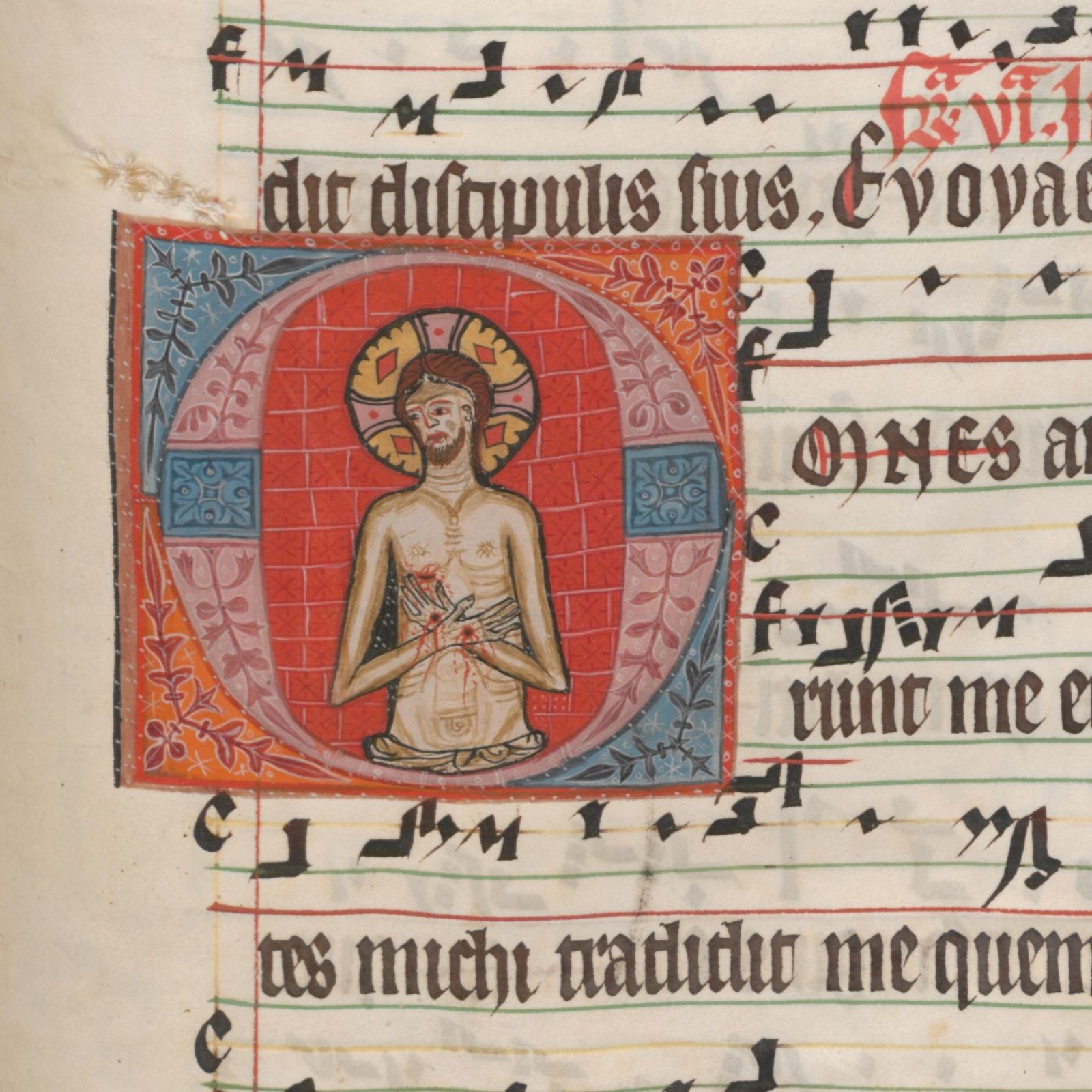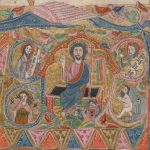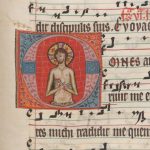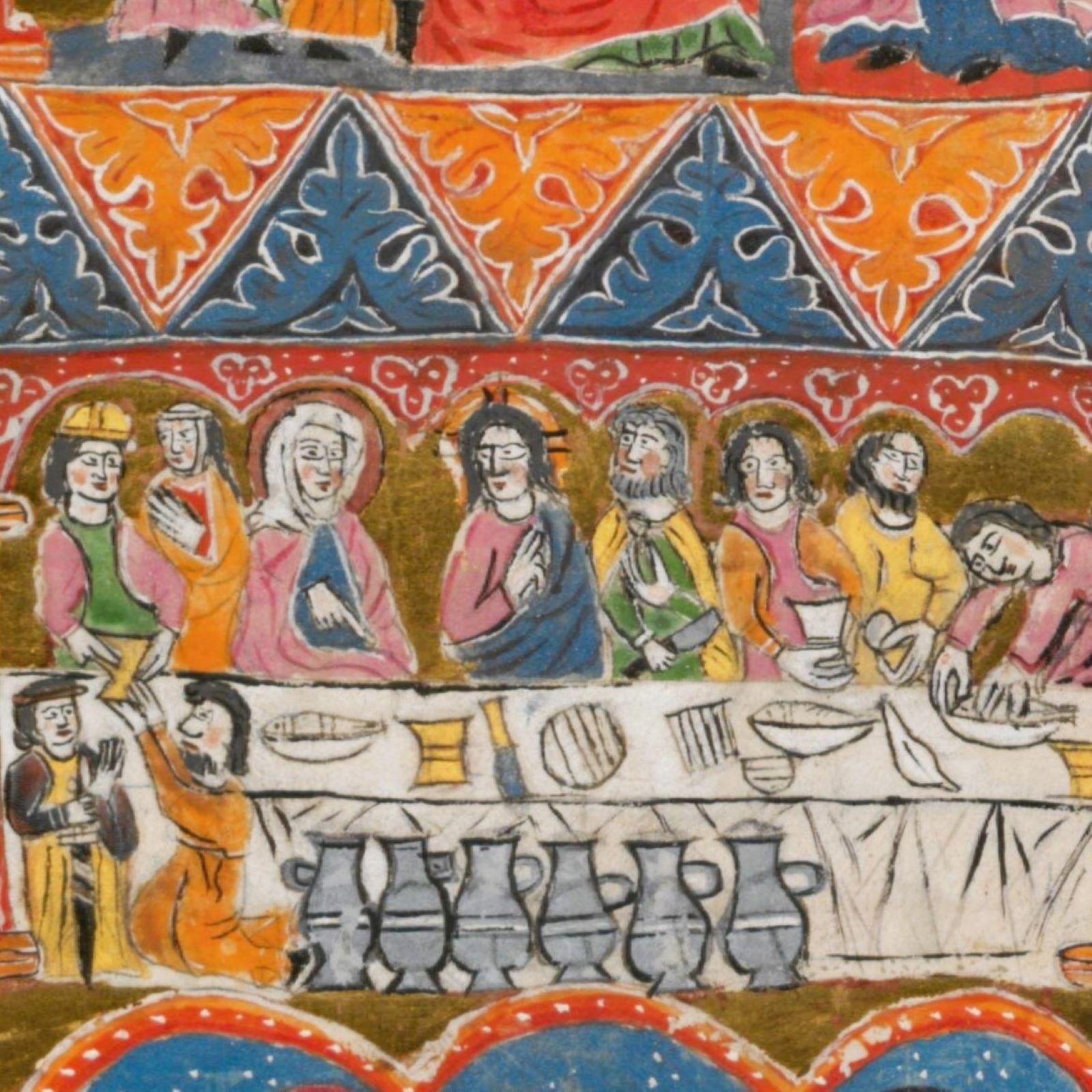
Treasures of the University Library
In the Manuscripts Department of the Library of the University of Wrocław, there are hidden treasures that take us back in time to an era when art was a narrative and every image had a story. We invite you on a fascinating journey through medieval miniatures, where Paschal symbolism flourished in the fullness of its artistic and cultural complexity. The Paschal Triduum is the most important event in the liturgical calendar of Christians.
The scene of the Last Supper gathers the disciples and Christ in the Upper Room. It shows the complexity of human emotions: fear, sadness, the awareness of the betrayal of one of them. It is a feast, an agape, but also a farewell and a foreshadowing of the future. It also symbolises forgiveness and humble love. The artist captured the moment of eating food together, which also signified the communal life of those taking part in the supper.
Good Friday is associated with the symbolism of death, which in medieval miniature is a rich story of passing, but also of the power that memory and art have in capturing moments. Every line and colour has a deep meaning, reflecting the universal quest to find beauty even in the most difficult moments. The miniature depicts sacrifice and love. Let us contemplate this beautiful image with solemnity, thoughtfulness and sadness. May it be a source of hope for us as we face challenges.
The Resurrection scene emerges from these manuscripts not only as a miracle, but also as the pinnacle of artistic vision and technique, symbolising the triumph of light over darkness, of life over death. It is a veritable feast for the eyes, full of dynamism and colour that speaks of enduring hope.
This paschal trilogy in medieval art from the Last Supper to the Resurrection is not only a testimony to a profound faith, but above all an extraordinary emotional story of truth and the transition from sorrow to hope.
Text compilation: Anna Szczotka-Sobiecka and Marta Lange, BUWr Special Collections’ Reading Room
